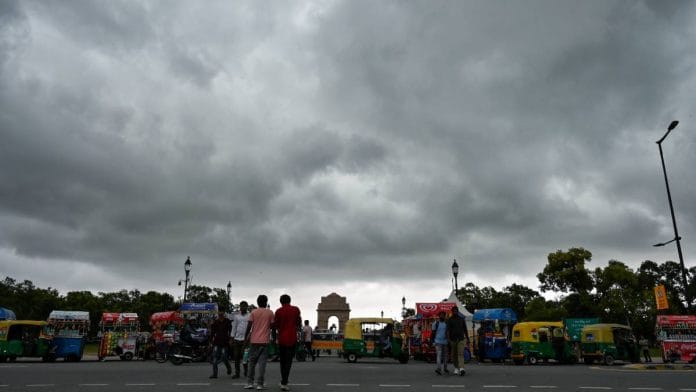New Delhi: The Delhi Cabinet Wednesday approved a Rs 3.21 crore outlay to conduct five cloud seeding trials across the Delhi-National Capital Region (NCR) region as part of plans to tackle air pollution.
Set to take place by the end of this month, the first trial will be on the outskirts of Delhi over an area of 100 sq km.
According to the environment department, the Indian Institute of technology (IIT) in Kanpur will handle the logistics, planning, and implementation of the idea.
While the effectiveness of cloud seeding has been under question, with a 2024 US Government Accountability Office report challenging the idea, it was proposed by the previous AAP government in Delhi as a solution for smog in the Capital and is now part of the new BJP government’s air pollution action plan.
Improving Delhi’s air was also one of the major promises of the BJP ahead of the Delhi elections this year. Large swathes of north India battle pollution each winter as cold air traps dust, vehicle emissions and smoke from farm fires in Punjab and Haryana, shrouding the national capital and its suburbs in a toxic haze.
“Technology must be at the forefront of our battle against air pollution. The Rekha Gupta government is committed to giving clean air to the people of Delhi, and this project represents a bold and scientific step in that direction,” said Delhi Environment Minister Manjinder Singh Sirsa in a press release.
Each cloud seeding trial will cost Rs 55 lakh, resulting in Rs 2.75 crore for five trials, while the cost of logistics, including aircraft, storage for chemicals, and other preparations, will be Rs 66 lakh. Sirsa said the funds would be given by the Delhi government to IIT Kanpur.
Also Read: Delhi NCR RWAs are the new pollution crusaders. If only govt would give them timely answers
What is cloud seeding?
Cloud seeding is the process of creating artificial rain to dissipate suspended particulate matter in the air and reduce pollution. This is the first time the Delhi government will try the process.
While proposed in the past, the cloud seeding plan could not materialise due to weather conditions. In theory, cloud seeding involves shooting elements like dry ice, silver iodide or salts (sodium chloride) into clouds to convert moisture into precipitation.
Cloud seeding experiments were earlier conducted in Tamil Nadu in 1973 and in Mumbai in 1974 by the Indian Institute of Tropical Meteorology (IITM) to induce rainfall during prolonged droughts, but the technique hasn’t yet been deployed against air pollution or smog in India.
In Karnataka, the state government had introduced a programme called Varshadhare in 2017 that included cloud seeding experiments, but that too was aimed at increasing rainfall in certain regions.
In an answer given in Parliament last year, the Union Ministry of Environment said that expert opinions about cloud seeding in Delhi pointed out the challenges.
“Effective cloud seeding requires specific cloud conditions, which are generally absent during Delhi’s cold and dry winter months. Even if suitable clouds were present, the dry atmospheric layer beneath them could cause any developed precipitation to evaporate before reaching the surface,” read the answer.
The Delhi government is, however, committed to conducting trials to test the efficacy of the method. Before cloud seeding can begin in any area of the city, the government needs to obtain permission from over 13 different agencies, including the Union Ministry of Environment, Directorate General of Civil Aviation, Ministry of Defence, Ministry of Home Affairs, and the Airports Authority of India.
“This initiative complements our ongoing efforts, including AI-based monitoring and 24×7 surveillance at pollution hotspots,” said Sirsa in the release.
(Edited by Nida Fatima Siddiqui)
Also Read: What’s making Delhi air deadlier






